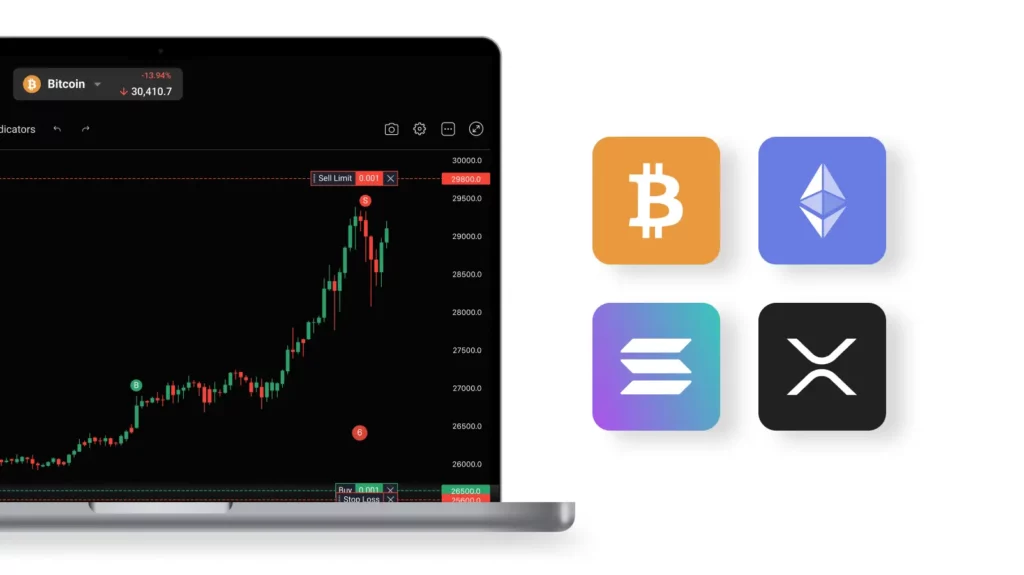PrimeXBT Forex Trading Signals
PrimeXBT Forex Trading Signals offer valuable insights and guidance for traders looking to navigate the complex world of Forex trading. By leveraging these signals, traders can make informed decisions, optimize their strategies, and potentially enhance their trading outcomes.

What are Forex Trading Signals?
Forex trading signals are recommendations or alerts generated by experienced traders or automated systems that indicate potential trading opportunities in the Forex market. These signals typically include entry and exit points, as well as stop-loss and take-profit levels.
The signals are based on a variety of analyses, including technical analysis, fundamental analysis, and market sentiment. By following these signals, traders can capitalize on market movements and improve their trading performance.
- Technical Analysis: Signals derived from charts, patterns, and technical indicators.
- Fundamental Analysis: Signals based on economic data, news, and events.
- Sentiment Analysis: Signals reflecting market sentiment and trader behavior.
- Automated Systems: Signals generated by algorithms and trading robots.
- Experienced Traders: Signals provided by seasoned traders with proven track records.
Each type of analysis brings a unique perspective to trading signals, allowing traders to choose the approach that best suits their style and goals. Understanding the differences and benefits of each can help traders make more informed decisions.
Benefits of Using PrimeXBT Forex Trading Signals
Utilizing PrimeXBT Forex trading signals offers several advantages, making them an essential tool for both novice and experienced traders. By following these signals, traders can enhance their trading strategies and potentially increase their profitability.
One of the primary benefits of using trading signals is the ability to make well-informed decisions based on expert analysis. These signals save traders time and effort by providing actionable insights without the need for extensive research and analysis.
- Time-Saving: Quickly identify trading opportunities without extensive research.
- Expert Insights: Gain access to professional analysis and recommendations.
- Risk Management: Implement stop-loss and take-profit levels to manage risks.
- Improved Accuracy: Enhance trading accuracy with data-driven signals.
- Learning Opportunity: Learn from the strategies and decisions of experienced traders.
Moreover, using trading signals can help traders develop a more disciplined approach to trading. By adhering to the provided entry and exit points, traders can avoid emotional decision-making and stick to a structured plan.
Types of PrimeXBT Forex Trading Signals
PrimeXBT offers a variety of Forex trading signals to cater to different trading styles and preferences. Understanding these types can help traders choose the most suitable signals for their needs and trading strategies.
Technical signals are based on technical analysis, which involves examining price charts, patterns, and indicators to identify potential trading opportunities. Fundamental signals, on the other hand, are derived from economic data, news, and events that influence currency prices.
| Signal Type | Description |
|---|---|
| Technical Signals | Generated from technical analysis of price charts and indicators. |
| Fundamental Signals | Based on economic data, news, and events affecting the Forex market. |
| Sentiment Signals | Reflect market sentiment and trader behavior. |
| Automated Signals | Generated by trading algorithms and robots. |
| Expert Trader Signals | Provided by seasoned traders with proven track records. |
Sentiment signals, reflecting market sentiment and trader behavior, are also available. Automated signals, generated by trading algorithms and robots, offer a hands-off approach to trading. Lastly, signals from expert traders provide valuable insights from experienced professionals.
How to Use PrimeXBT Forex Trading Signals
Effectively using PrimeXBT Forex trading signals involves several steps. By following these steps, traders can maximize the benefits of the signals and improve their trading outcomes.
First, it is important to understand the signals and the analysis behind them. This knowledge allows traders to make informed decisions and customize the signals to their trading strategies. Additionally, setting up alerts and notifications ensures that traders receive signals promptly and can act on them quickly.
- Understand the Signals: Learn about the analysis and reasoning behind the signals.
- Set Up Alerts: Configure alerts and notifications to receive signals promptly.
- Customize Signals: Adjust the signals to fit your trading strategy and risk tolerance.
- Implement Risk Management: Use stop-loss and take-profit levels to manage risks.
- Monitor and Adjust: Continuously monitor your trades and adjust as necessary.
Customizing the signals to fit individual trading strategies and risk tolerance is also crucial. Implementing risk management techniques, such as setting stop-loss and take-profit levels, helps manage potential losses and secure profits.

Common Mistakes to Avoid with Forex Trading Signals
While Forex trading signals can be highly beneficial, traders should be aware of common mistakes that can hinder their success. Avoiding these mistakes can lead to better trading outcomes and a more effective use of the signals.
One common mistake is relying solely on signals without conducting any additional research or analysis. While signals provide valuable insights, it is essential for traders to verify the information and consider other factors before making a decision.
- Over-Reliance on Signals: Conduct additional research and analysis.
- Ignoring Risk Management: Implement stop-loss and take-profit levels.
- Emotional Trading: Stick to the signals and avoid emotional decision-making.
- Not Monitoring Trades: Continuously monitor and adjust your trades.
- Inconsistent Usage: Use signals consistently for better results.
Another mistake is ignoring risk management practices. Traders should always use stop-loss and take-profit levels to protect their investments. Emotional trading, or making decisions based on emotions rather than logic, can also negatively impact trading outcomes.